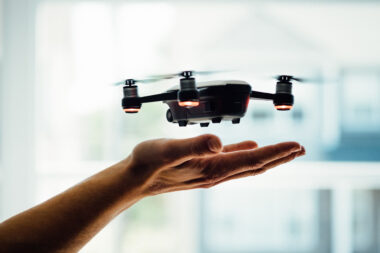The increasing complexity and scale of modern infrastructure demand sophisticated monitoring techniques. Smart sensors, equipped with advanced technologies, offer a promising solution to address the challenges associated with traditional monitoring methods. This research article delves into the realm of smart sensors, elucidating their fundamental attributes and exploring their myriad applications in the domain of infrastructure monitoring.
Smart Sensors
Smart sensors refer to devices embedded with computational power and communication capabilities, designed to collect and transmit data from the physical environment. Unlike traditional sensors, smart sensors possess the ability to process and analyze data locally, enabling real-time decision-making.
- Sensing Capabilities: Smart sensors utilize various sensing technologies (e.g., accelerometers, strain gauges, and temperature sensors) to capture a wide range of physical parameters.
- Connectivity: Integration with communication protocols such as IoT (Internet of Things) enables seamless data transmission.
- Data Processing: Onboard processing capabilities allow smart sensors to analyze and filter data before transmission, reducing the burden on centralized systems.
Step-by-step monitoring process
- Sensor Technologies:
- Accelerometers: Measure acceleration and vibrations in structures.
- Strain gauges: monitor structural deformation and stress.
- Inclinometers: Measure angular tilt and displacement.
- Fiber Optic Sensors: Employ optical fibers to measure strain, temperature, and other parameters.
- Wireless Sensor Networks (WSNs): Enable communication between sensors without the need for physical connections.
- Internet of Things (IoT)-enabled Sensors: Provide connectivity, allowing sensors to transmit data over the internet.
- Calibration Techniques:
- Static Calibration: Performed under constant conditions to establish a baseline for sensor measurements.
- Dynamic Calibration: This involves subjecting sensors to known dynamic forces or environmental changes to ensure accurate measurements.
- Data Acquisition Systems:
- Data Loggers: Capture, store, and sometimes process data locally before transmission.
- Communication Protocols (e.g., MQTT, CoAP): Facilitate data transfer between sensors and centralized systems.
- Real-Time Data Collection:
- Continuous Monitoring: Sensors continuously collect data to provide a real-time view of the monitored parameters.
- Sampling Rate Control: Adjust the frequency at which sensors capture and transmit data to balance precision and resource consumption.
- Data Transmission and Storage:
- Wireless Communication: Utilize technologies such as Wi-Fi, Bluetooth, or cellular networks for data transmission.
- Cloud Storage: Store data on cloud-based platforms for accessibility, scalability, and backup.
- Data Processing and Analysis:
- Onboard Processing: Some smart sensors have built-in processing capabilities to analyze data before transmission.
- Edge Computing: Process data locally on edge devices to reduce latency and enhance real-time analysis.
- Machine Learning Algorithms: Implement algorithms to detect patterns, anomalies, or trends in the collected data.
- Alerts and Notifications:
- Threshold-based Alerts: Trigger alerts when monitored parameters exceed predefined thresholds.
- Rule-Based Systems: Use rule engines to define complex conditions that, when met, generate alerts.
- Remote Monitoring and Control:
- Remote Access Platforms: Web-based interfaces or mobile apps for accessing real-time data and system controls remotely.
- Remote Actuation: Control actuators or devices remotely based on the insights gained from monitored data.
- Regular Maintenance and Calibration:
- Predictive Maintenance Algorithms: Use data analytics to predict when maintenance is needed, reducing downtime.
- Automated Calibration Systems: Implement systems that automatically calibrate sensors at scheduled intervals.
- Data Visualization and Reporting:
- Dashboard Tools (e.g., Grafana, Tableau): Create visual representations of monitored data for easy interpretation.
- Reporting Tools: Generate automated reports summarizing key performance indicators and trends.
- Feedback and continuous improvement:
- User Feedback Systems: Gather input from users and stakeholders to identify areas for improvement.
- Software Updates: Regularly update monitoring software and algorithms based on user feedback and advancements in technology.
By integrating these techniques and technologies, organizations can establish robust smart sensor monitoring systems that contribute to the resilience and efficiency of critical infrastructure.
Algorithm Used
- Signal Processing Algorithms:
- Fast Fourier Transform (FFT): Used for analyzing frequency components of structural vibrations, helping to identify resonant frequencies and potential issues.
- Anomaly Detection Algorithms:
- Statistical Process Control (SPC): Monitors structural parameters over time, flagging deviations from the expected behavior as potential anomalies.
- Machine Learning (ML) Algorithms (e.g., Isolation Forest, One-Class SVM): Trained on normal behavior data, these algorithms can detect anomalies in real-time sensor readings.
- Predictive maintenance algorithms:
- Prognostics and Health Management (PHM): Combines data analysis with predictive modeling to estimate the remaining useful life of bridge components, helping plan maintenance activities.
- Survival Analysis: Models the time until a specific event occurs, such as the failure of a structural component.
- Data Fusion Algorithms:
- Kalman Filtering: Integrates data from multiple sensors to improve the accuracy of measurements and reduce noise in the data.
- Clustering Algorithms:
- K-Means Clustering: Groups similar sensor readings together, helping to identify patterns or trends in the data.
- Density-Based Spatial Clustering of Applications with Noise (DBSCAN): identifies clusters of data points, useful for detecting outliers or structural abnormalities.
- Machine Learning for Predictive Analytics:
- Regression analysis models relationships between variables, allowing the prediction of future values based on historical data.
- Random Forests: An ensemble learning method used for regression and classification tasks, offering robust predictive capabilities.
- Deep Learning Algorithms:
- Recurrent Neural Networks (RNN): Suitable for time-series data, RNNs can capture temporal dependencies in sensor readings.
- Long Short-Term Memory (LSTM) Networks: A type of RNN designed to overcome the vanishing gradient problem, useful for long-term dependencies in time-series data.
- Classification Algorithms:
- Support Vector Machines (SVM): Can be used for classifying sensor readings into normal or abnormal categories.
- Decision Trees: Hierarchical tree structures that classify data based on a series of decisions are suitable for pattern recognition.
- Fault Detection and Diagnostic Algorithms:
- Principal Component Analysis (PCA) reduces dimensionality and identifies patterns in sensor data, useful for fault detection and diagnostics.
- Fault Tree Analysis (FTA) is a systematic method for analyzing the causes and effects of potential faults in a system.
Case Study
The aging infrastructure of bridges poses significant challenges for maintenance and safety. This case study explores the implementation of smart sensor technology to monitor the structural health of a key bridge, aiming to ensure timely detection of potential issues and enhance overall safety.
Implementation
- Selection of Smart Sensors:
- Various smart sensors were chosen, including accelerometers to monitor vibrations, strain gauges to measure structural deformation, and temperature sensors to track environmental conditions.
- Sensor Placement and Installation:
- Sensors were strategically placed on critical components such as support structures, beams, and cables. To ensure precise measurements, a team of experts carried out the installation.
- Calibration of Smart Sensors:
- Prior to deployment, all sensors underwent a thorough calibration process to ensure accurate and reliable data. Static and dynamic calibration tests were conducted to validate sensor readings.
- Integration with Data Acquisition Systems:
- A centralized data acquisition system was implemented, employing wireless communication protocols to facilitate seamless data transfer from the sensors to a cloud-based platform.
- Real-Time Data Collection:
- The sensors were configured to collect data in real-time, capturing information on structural vibrations, strain levels, and temperature changes continuously.
- Data Transmission and Storage:
- Wireless communication enabled the transmission of data to a secure cloud storage system. This approach ensured accessibility to real-time data from any location.
- Data Processing and Analysis:
- The onboard processing capabilities of the smart sensors were utilized for initial data analysis. Advanced machine learning algorithms were employed to identify patterns and anomalies in the data.
- Alerts and Notifications:
- An alert system was established to notify engineers and maintenance personnel in the event of abnormal readings, indicating potential structural issues. Threshold-based alerts were set up for immediate response.
- Remote Monitoring and Control:
- Engineers were granted remote access to the monitoring system through a web-based interface. This allowed them to monitor real-time data and make informed decisions regarding maintenance and inspections.
Results
- Early Detection of Anomalies:
- The smart sensor system successfully detected subtle changes in structural behavior, allowing for early identification of potential issues.
- Proactive Maintenance:
- With real-time data at their disposal, maintenance teams could proactively address emerging problems, preventing the escalation of structural issues and minimizing downtime.
- Improved Structural Health Insights:
- Continuous monitoring provided valuable insights into the bridge’s overall structural health, enabling engineers to assess the impact of environmental factors and traffic loads.
- Cost Savings:
- Proactive maintenance and targeted interventions based on smart sensor data led to cost savings by reducing the need for emergency repairs and minimizing the impact on bridge operations.
Conclusion
This case study illustrates the successful implementation of smart sensor technology for monitoring a critical bridge’s structural health. The integration of advanced sensors, data analytics, and remote monitoring capabilities proved instrumental in enhancing safety, prolonging the bridge’s lifespan, and optimizing maintenance efforts. The insights gained from this case study can be applied to similar infrastructure projects, promoting a proactive and data-driven approach to maintenance and safety.



